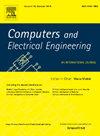A coupled framework for power load forecasting with Gaussian implicit spatio temporal block and attention mechanisms network
IF 4
3区 计算机科学
Q1 COMPUTER SCIENCE, HARDWARE & ARCHITECTURE
引用次数: 0
Abstract
The increasing demand for electricity underscores the need for accurate power load forecasting to optimize grid management and resource allocation. With the emergence of more complex multi-energy hybrid systems, the resulting multivariate power load data pose significant challenges for precise forecasting. To address this, we propose a novel framework that integrates Variational Mode Decomposition (VMD) with an Encoder–Decoder architecture featuring customized Gaussian Implicit Spatio-Temporal (GIST) blocks to uncover implicit spatial dependencies across temporal and multi-feature dimensions. Initially, VMD decomposes the original time series into multiple resolution components, effectively reducing noise and extracting intrinsic temporal patterns. These components are then processed by an Encoder–Decoder network for prediction. Within each GIST block, token embedding is applied to the input before being fed into a Gaussian Mixture Model (GMM)-based implicit spatio-temporal representation module. Unlike conventional expectation–maximization (EM) algorithms, our learned Gaussian modeling approach provides a more adaptive and computationally efficient alternative for residential power load forecasting. Temporal dependencies are further captured through Long Short-Term Memory (LSTM) units and attention mechanisms across subsequent blocks, enhancing the model’s predictive capability. Experimental validation demonstrates the superior performance of our proposed model, achieving reductions of 7.98% and 9.32% in Mean Absolute Error (MAE) and Root Mean Square Error (RMSE), respectively, compared to existing forecasting models. Notably, our GMM-based approach outperforms traditional two-dimensional convolution-based methods, yielding improvements of 11.3% and 5.72% in MAE and RMSE, highlighting the efficacy of our framework in handling complex multivariate power load data.
基于高斯隐式时空块和注意机制网络的电力负荷预测耦合框架
不断增长的电力需求凸显了准确的电力负荷预测以优化电网管理和资源分配的必要性。随着越来越复杂的多能混合系统的出现,由此产生的多元负荷数据对精确预测提出了重大挑战。为了解决这个问题,我们提出了一个新的框架,该框架将变分模式分解(VMD)与具有自定义高斯隐式时空(GIST)块的编码器-解码器架构集成在一起,以揭示跨时间和多特征维度的隐式空间依赖性。首先,VMD将原始时间序列分解为多个分辨率分量,有效地降低了噪声,提取了固有的时间模式。然后,这些组件由编码器-解码器网络进行处理以进行预测。在每个GIST块中,将标记嵌入到输入中,然后将其输入到基于高斯混合模型(GMM)的隐式时空表示模块中。与传统的期望最大化(EM)算法不同,我们的学习高斯建模方法为住宅电力负荷预测提供了一种更具适应性和计算效率的替代方法。通过长短期记忆(LSTM)单元和后续块的注意机制进一步捕获时间依赖性,增强模型的预测能力。实验验证了我们提出的模型的优越性能,与现有的预测模型相比,平均绝对误差(MAE)和均方根误差(RMSE)分别降低了7.98%和9.32%。值得注意的是,我们基于gmm的方法优于传统的基于二维卷积的方法,MAE和RMSE分别提高了11.3%和5.72%,突出了我们的框架在处理复杂的多元电力负荷数据方面的有效性。
本文章由计算机程序翻译,如有差异,请以英文原文为准。
求助全文
约1分钟内获得全文
求助全文
来源期刊

Computers & Electrical Engineering
工程技术-工程:电子与电气
CiteScore
9.20
自引率
7.00%
发文量
661
审稿时长
47 days
期刊介绍:
The impact of computers has nowhere been more revolutionary than in electrical engineering. The design, analysis, and operation of electrical and electronic systems are now dominated by computers, a transformation that has been motivated by the natural ease of interface between computers and electrical systems, and the promise of spectacular improvements in speed and efficiency.
Published since 1973, Computers & Electrical Engineering provides rapid publication of topical research into the integration of computer technology and computational techniques with electrical and electronic systems. The journal publishes papers featuring novel implementations of computers and computational techniques in areas like signal and image processing, high-performance computing, parallel processing, and communications. Special attention will be paid to papers describing innovative architectures, algorithms, and software tools.
 求助内容:
求助内容: 应助结果提醒方式:
应助结果提醒方式:


